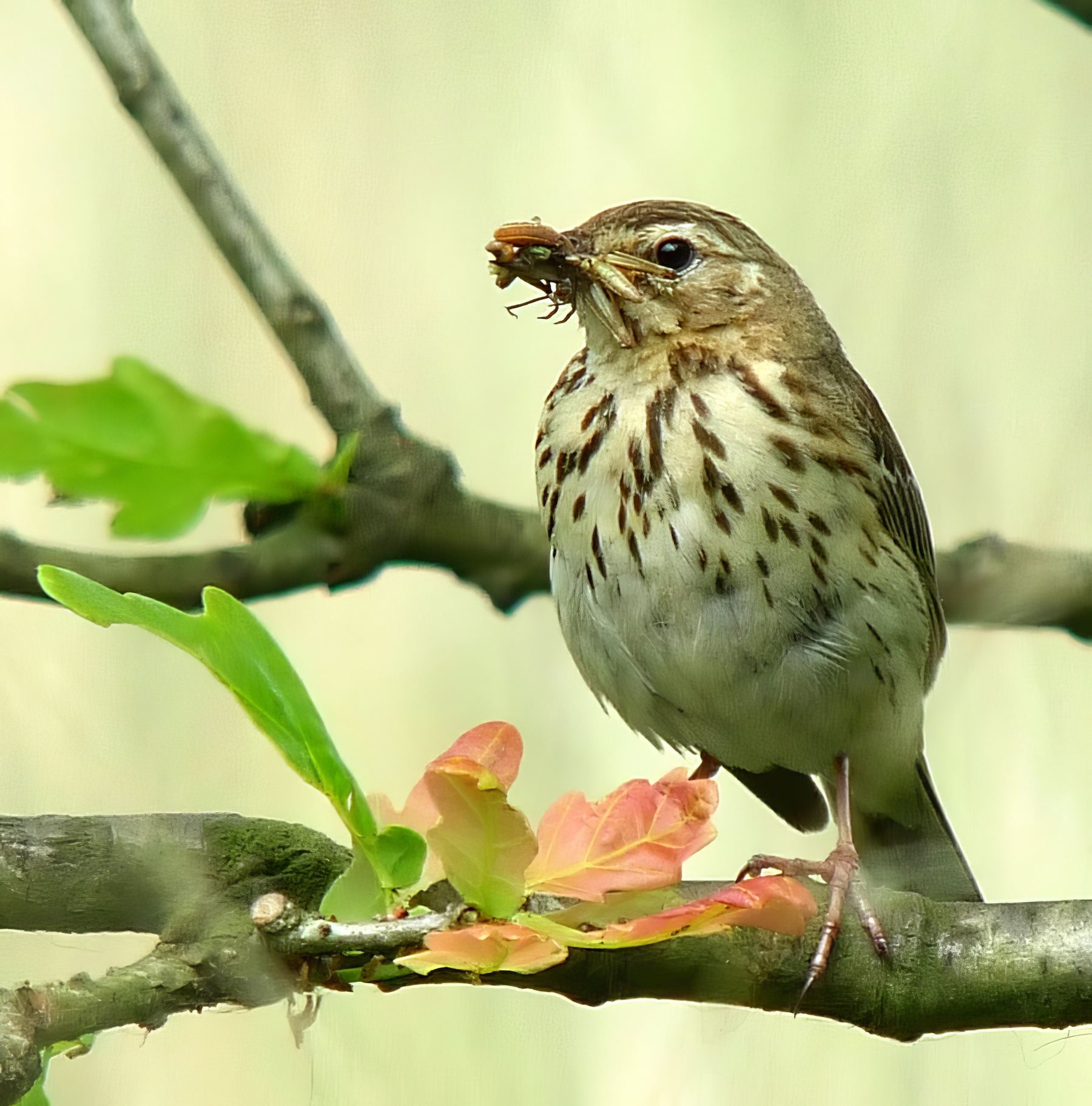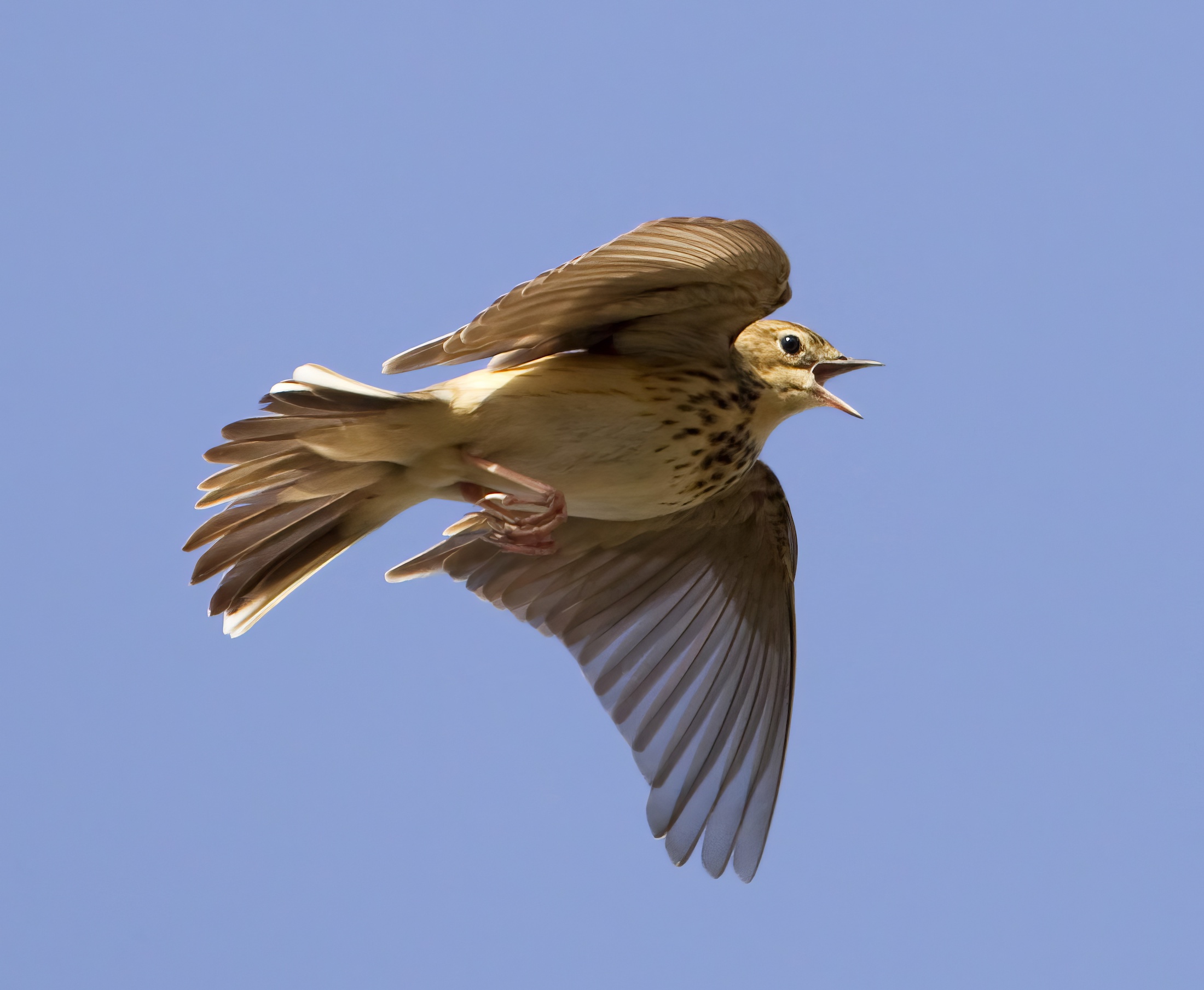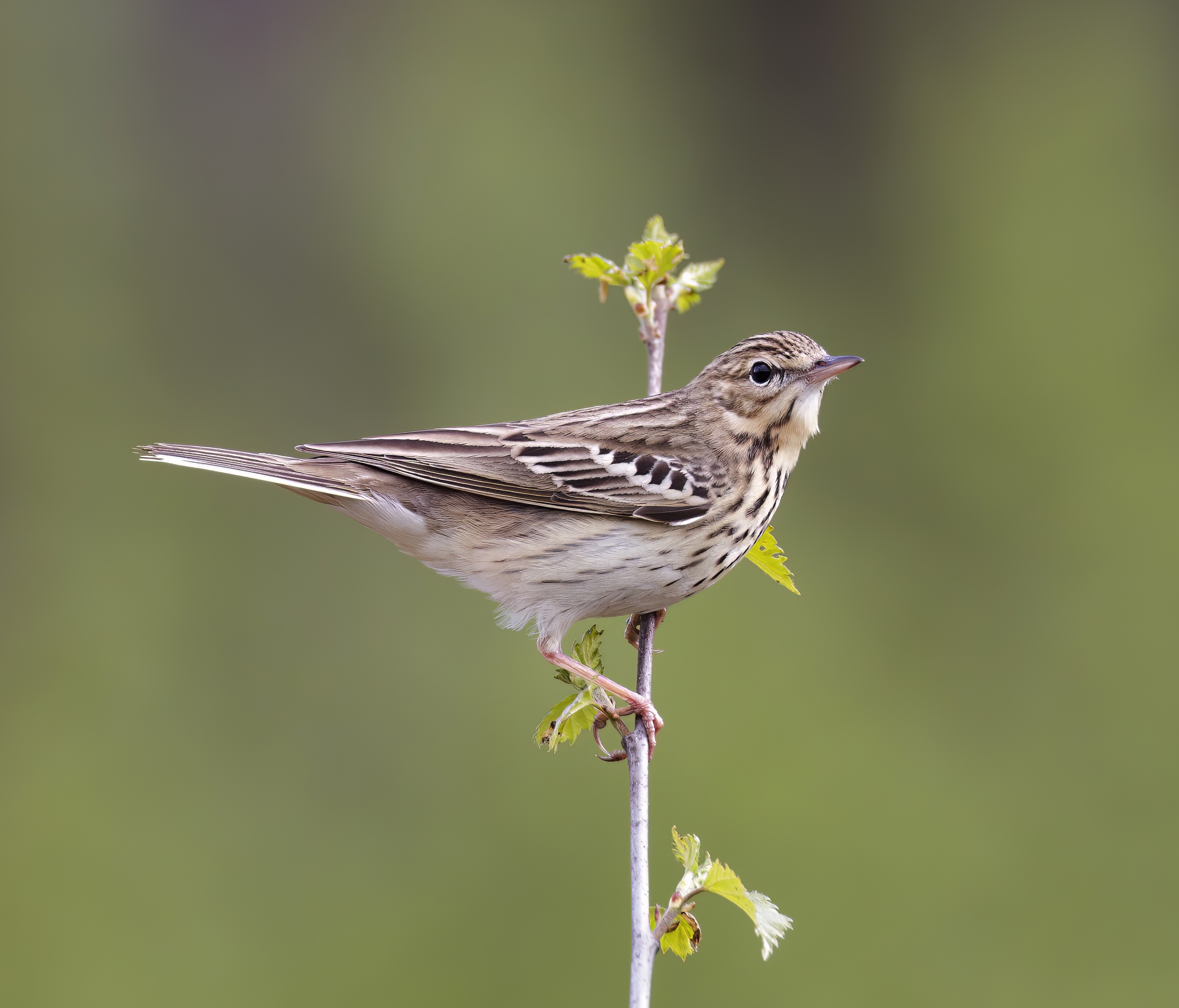Tree Pipit Anthus trivialis
Scarce summer visitor and passage migrant. Breeds locally, mainly in the western half of the county.



Smith & Cornwallis (1955) noted the status of the Tree Pipit as follows: “A locally common summer visitor in many northern, western and south-western districts, but very scarce in most eastern parts of the county. It is particularly numerous on the heaths of the north-west and in similar country around Market Rasen, Woodhall Spa and in the district west and south-west of Lincoln.” Thirty-four years later, Lorand and Atkin (1989) still reckoned that the species was “A fairly common summer visitor and passage migrant. It is widespread in the north-west, central and south-west of the county where it breeds in open woodland, young conifer plantations and on heathland.” By 1990 the species was confined to less than ten breeding sites with the bulk of the population in the Laughton Forest–Scotton Common area and Crowle Moors. At Laughton-Scotton the peak in occupied territories was in 2003 when 52 males were recorded but since then numbers have fallen with the last full survey locating 26 males in 2015. The combined county breeding population is now in the region of 40 – 45 males with studies showing that up to 26% of singing males may be unmated in a typical year. The earliest arrivals appear on breeding sites in the first week of April. Birds occur along the coastal strip on passage in April–May and August–October with late records in early November. Inland migrants are less obvious in the same periods.
(Account as per new Birds of Lincolnshire (2021), included December 2022)
